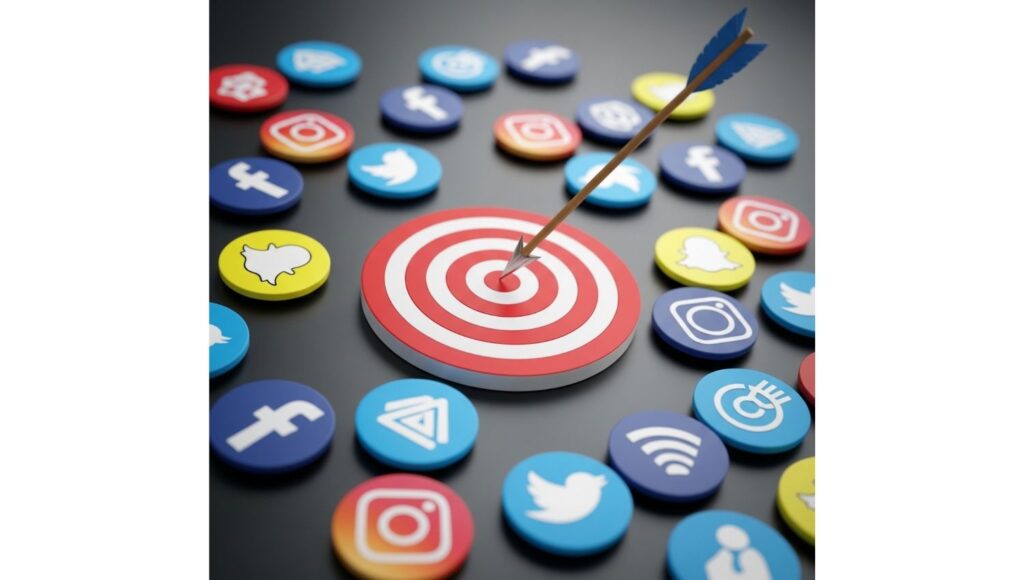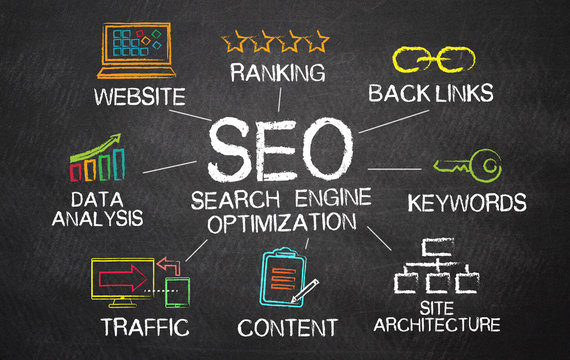Table of Contents
The Power of Social Media Marketing: Stats & Strategies

Introduction
In the midst of the hectic digital marketing landscape, there is one that reigns supreme and evolving—social media marketing (SMM). With billions and billions of active users on most networks, businesses now have unparalleled direct access to their target market. From building brand awareness for their business to generating sales and interacting with customers, social media is now a digital growth engine.
This blog explores the real potential of social media marketing-backed by relevant statistics, platform insights, and action plans that will see companies reach further in 2025 and beyond.
Chapter 1: What is Social Media Marketing?
Social Media Marketing (SMM) refers to the deployment of social media platforms to promote a brand, reach an audience, sell, and drive traffic to websites. It entails creating and publishing content on and off platforms in the image, video, story, and ad formats.
Major Channels for Social Media Marketing:
- Twitter (X)
- YouTube
- TikTok
- Threads
Every platform has its unique strengths, yet the general goal is the same: make visibility, engagement, and conversion happen.
Chapter 2: Why Social Media Marketing Matters Today
Let us consider some solid facts that confirm the value of SMM:
Global Reach
- There are 5.17 billion social media users in the world as of 2025, representing 64.6% of the world’s population.
- The average user’s daily social media usage is 2 hours and 28 minutes.
Business Impact
- 73% of marketers swear that their company has been successful through social media marketing.
- 80% of the people who use Instagram are tracking one or more brands.
- Businesses that utilize SMM have 129% higher conversion rates than businesses that don’t utilize SMM.
Brand Awareness
- Social media frequency guarantees brand visibility by 80%.
- 54% of social surfers employ social media to shop products.
These statistics indicate how valuable SMM is to gain, retain, and make customers loyal.
Chapter 3: Benefit of Social Media Marketing
1. Greater Brand Awareness
Companies have a chance to get in front of people who may never get there through traditional marketing with a strong presence.
2. Improved Customer Engagement
Live engagement builds trust. Spontaneous replies to comments, anecdotes, or DMs show you care.
3. Greater Customer Insights
SMM tools let you know what’s working, what your audience wants, and when they’re most active.
4. Inexpensive Advertising
Social media advertising is less expensive and measurable in comparison to the older media.
5. Better Conversion Rates
Good visual content and strong CTAs tend to offer better leads and conversions.
Chapter 4: Platform-Wise Strategy Breakdown
Now let’s break down what is working on each of the major social media platforms:
Demographics: 25–44 years old
Content That Works: Videos, Live streams, Community posts
Strategy Tips:
- Utilize Facebook Groups for building community.
- Lookalike Audiences for targeted advertising.
- Post at prime times (1 PM–3 PM weekdays).
Demographics: 18–34 years old
Content That Works: Reels, Stories, Product photos
Strategy Tips:
- Keyword-optimized bio.
- Use Instagram Shopping on product pages.
- Post frequently and engage with polls, questions, and stickers.
Demographics: Professionals, B2B, 30–50 years old
Content That Works: Case studies, Thought leadership, Job updates
Strategy Tips:
- Share long-form content weekly.
- Engage in commenting on industry posts.
- Use LinkedIn Ads for lead targeting.
Twitter (X)
Demographics: News-aware, 18–49 years old
Content That Works: Updates, Opinions, Threads
Strategy Tips:
- Share multiple times daily.
- Use relevant hashtags to be discovered.
- Join trending conversations.
YouTube
Demographics: Mass audience, all age ranges
Content That Works: Tutorials, Product Demonstrations, Blogs
Strategy Tips:
- Search engine optimization-friendly titles and descriptions.
- Relevent content playlists.
- Bite-sized chunks with YouTube Shorts.
Demographics: Women aged 25–45
Content That Works: Infographics, How-to’s, Do-it-yourself’s
Strategy Tips:
- Regular pinning and keyword-based descriptions.
- Timely optimization.
- Blog and site integration.
Chapter 5: Social Media Content Strategies That Work
To thrive on social media, you will need a solid content strategy. Here is a strategic template:
1. The 80/20 Rule
- 80% of your content must inform, entertain, or inspire.
- 20% should explicitly sell your product or service.
2. Content Buckets
Categorize your posts into buckets:
- Educational (Tips, Stats, Guides)
- Inspirational (Quotes, Stories)
- Promotional (Offers, Product Demos)
- Behind-the-Scenes (BTS, Employee Spotlights)
- User-Generated Content (Reviews, Reposts)
3. Storytelling Approach
Humans connect with stories, not with products. Share real customer success stories and business stories.
4. Use Visuals & Videos
- Image posts get 2.3x more engagement.
- Video posts get 1200% more shares over text and images combined.
5. Hashtag Strategy
- Apply branded and niche hashtags.
- Drop banned and irrelevant ones.
- Mix high-volume and low-competition hashtags.
Chapter 6: The Social Media Funnel (AIDA Model)
Let’s put the AIDA (Awareness–Interest–Desire–Action) model over your content.
- Awareness: Short Reels, memes, trending challenges
- Interest: How-to’s (Explainers), behind-the-scenes, reviews
- Desire: Endorsements, influencer testimonials
- Action: CTAs, landing pages, promotions
Each piece of content is for a particular stage of the buying process.
Chapter 7: 2025 Content Ideas & Calendar Framework
To win, plan content across formats
| Day | Theme | Type of Content |
|---|---|---|
| Monday | Educational | Tips, Tutorials, Threads |
| Tuesday | Social Proof | Reviews, Case Studies |
| Wednesday | Interactive | Polls, Quizzes, Q&As |
| Thursday | Thought Leadership | Founder posts, Insights |
| Friday | Promotional | Offers, Product Features |
| Saturday | Community-Oriented | Behind-the-Scenes, UGC |
| Sunday | Inspirational | Quotes, Stories |
Chapter 8: Real-World Case Studies
Case Study 1: Small Biz to Big Sales (eCommerce)
Brand: New startup selling handmade candles
Strategy:
- Utilized Instagram Reels with ASMR-type of videos.
- Collaborated with nano-influencers.
- Used carousel posts to tell product stories.
Result:
420% follower growth, 78% sales growth in 6 months.
Case Study 2: B2B Growth through LinkedIn
Brand: SaaS platform for HR tool
Strategy:
- Regularly posted hiring insights and HR templates.
- Co-hosted live webinars on LinkedIn.
- Advertised on LinkedIn Ads targeting US HR heads.
Result: 350 high-quality leads in 3 months, 2 enterprise conversions.
Chapter 9: Social Media Advertising – Go Beyond Boosting
Instead of simply promoting posts, conduct well-regulated ad campaigns:
Social Media Ad Types:
- Lead Gen Ads
- Conversion Ads
- Retargeting Campaigns
- Video View Ads
- Story Ads (Full-screen, immersive)
Best Practices:
- A/B test everything—headlines to imagery.
- Optimize your landing pages for mobile.
- Use urgency (time-sensitive offers, countdown timers).
Chapter 10: Social Media + Email = Perfect Combo
Don’t rely solely on algorithms. Use social to grow your email list.
Tips:
- Offer lead magnets (checklists, guides) in Instagram bios.
- Collect email via contests or story stickers.
- Connect Facebook leads to CRM software like Mailchimp or ConvertKit.
Once an individual has opted in, shower them with love using email campaigns.
Chapter 11: Engagement Hacks That Work in 2025
- Use Instagram Collabs to double the reach.
- Add polls to Stories and LinkedIn to drive clicks.
- Add direct questions to elicit comments.
- Share provocative opinions to get people talking.
- Show up on camera regularly – people trust faces, not logos.
Chapter 12: ROI Measurement & KPIs
Metrics to Track:
- Engagement rate = (Likes + Comments + Shares) / Total Reach
- Click-through rate (CTR)
- Cost per Click (CPC)
- Customer Lifetime Value (CLV)
- Return on Ad Spend (ROAS)
- Conversion Rate
Utilize tools like Google Analytics, Meta Business Suite, and LinkedIn Campaign Manager to gather accurate data.
Chapter 13: Social Media Trends to Watch in 2025–2026
- AI & Automation for content and customer support
- Creator-Led Commerce on YouTube & TikTok
- Private Communities on WhatsApp, Facebook, and Discord
- Long-Form Short Videos – Yes, Shorts now have chapters!
- Sustainability & Purpose Marketing—people follow brands that care
Bonus Resources
Following are some free tools to level up your social game:
| Purpose | Tool |
|---|---|
| Graphic Design | Canva, Adobe Express |
| Video Editing | CapCut, InShot |
| Analytics | Sprout Social, Buffer |
| Scheduling | Later, Metricool |
| Hashtag Research | Hashtagify, RiteTag |
| CRM & Email Capture | Mailchimp, HubSpot |
Chapter 14: Paid Social Advertising
Why Paid Ads Matter
Organic reach is declining. Facebook post average organic reach in 2025 is just 5.2%.
Advantages of paid advertising:
- Targeting (place, age, interests)
- A/B testing functionality
- Retargeting of return visitors
Best Practices:
- Prominently use only ad copy with clear CTAs.
- Batch test creatives and formats.
- Measure performance through Facebook Pixel or Google Analytics.
Chapter 15: Influencer & Creator Collaboration
Ninjas recognize the strength of influencers as authenticators and reach amplifiers. Influencer marketing is expected to be a $24 billion industry in 2025.
Influencer Types:
- Mega (1M+ fans)
- Macro (100K–1M)
- Micro (10K–100K)
- Nano (1K–10K)
Why Partner?
- Word of mouth from sources known and trusted
- Niche targeting
- Potential for user-generated content
How to Partner: - Select influencers that are matched with your audience.
- Provide freedom of ideas.
- Establish KPIs (reach, engagement, conversions) clearly.
Chapter 16: Tools to Supercharge Your Social Media
Content Creation:
- Canva
- Adobe Express
- CapCut
Scheduling & Analytics:
- Buffer
- Hootsuite
- Later
Hashtag & SEO:
- Hashtagify
- KeywordTool.io
- Ubersuggest
Performance Tracking:
- Google Analytics
- Meta Business Suite
- Sprout Social
Chapter 17: Avoid These Common Mistakes
- Posting Without a Strategy
- Not Reading Comments and DMs
- Over-promoting Products
- Ignoring Mobile Optimization
- Posting Low-Quality Visuals
- Inconsistent Branding
Consistency and clarity matter. All of the posts must speak your brand voice and values.
Chapter 18: Social Media Marketing Future Trends
1. AI Content Creation
ChatGPT, DALL·E, and AI video tools are speeding up content creation.
2. Social Commerce
In-app purchases and Instagram, Facebook, and TikTok storefronts are growing rapidly.
3. Augmented Reality (AR)
AR try-ons and filters are taking off in eCommerce.
4. Voice & Audio Content
Twitter Spaces, podcast bites, and podcasts are attracting new types of content.
5. Creator-Driven Brands
Creators are crafting their own products and becoming brands unto themselves.
19.Conclusion
Social media marketing is not an option anymore—it’s imperative. With over 5 billion users and increasing engagement levels, it’s a goldmine waiting to happen. But to succeed, you need to have a good strategy, a reasonable grasp of every platform’s strengths, and developing authentic content that speaks to your audience.
You’re a small business or a large business—harnessing the power of social media can bring real business results—from awareness to advocacy.
20.FAQs: Social Media Marketing
1. How often should I post on social media?
2–3 times a week is best for most sites. Quality and consistency are more important than frequency.
2. What’s best social media for B2B marketing?
LinkedIn is best for B2B, then Twitter and YouTube.
3. What are the key performance indicators that I need to measure in order to determine social media success?
Engagement rate, reach, conversions, and CTR are among the key metrics
4. When can I see the effects of SMM?
You can start seeing engagement after 30–60 days, but sustainable results emerge after 3–6 months.
5. Must I hire a social media agency?
If you have limited time or no experience, a professional agency can help speed your growth with targeted strategies and campaigns.


